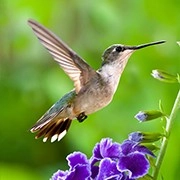Capture the Motion

Have you ever seen those dreamy photos of silky waterfalls, glowing night highways, or soft ocean waves—and wondered how they were made? Chances are, they were captured using long exposure photography.
Today, let's explore together how we can use this technique to tell powerful visual stories through light and motion.
What Is Long Exposure Photography?
Long exposure photography involves keeping the camera's shutter open for an extended period—anywhere from a few seconds to several minutes. This allows the sensor to capture more light and movement over time, producing unique visual effects that are impossible to see with the unaided eye.
We love using long exposure because it turns ordinary moments—like waves crashing or cars passing by—into something almost magical. It reveals patterns of movement and plays with light in ways that feel poetic and full of emotion.
Mastering the Core Settings
Let's start with the technical basics. There are three main settings we always adjust when working with long exposure:
• Shutter Speed: This is the most important. A longer shutter speed (like 10 or 30 seconds) allows more motion blur. To capture car light trails or smooth waterfalls, we generally go for 5–30 seconds.
• Aperture (f-stop): A smaller aperture (like f/11 or f/16) helps control the amount of light entering the lens, especially during daylight shots. It also gives us deeper focus.
• ISO: Lower is better—ISO 100 or 200 reduces noise in the image, which is critical when the sensor is exposed for longer times.
It's a balancing act. We have to control how much light hits the sensor over time without overexposing the image.
Using a Tripod: Your Best Friend
We can't stress this enough—use a tripod. Because long exposure means keeping the shutter open for several seconds or more, even the slightest hand movement can cause blurring. A stable tripod keeps everything still, so only the moving elements—like water, cars, or clouds—show motion.
For extra stability, we often use a remote shutter release or a camera timer. That way, pressing the shutter button doesn't shake the camera at the start.
Creating Dynamic Light Trails at Night
One of the most fun ways to experiment with long exposure is photographing light trails at night. Think of city streets with headlights and taillights creating glowing lines of red and white.
To do this, we usually set our camera to a 10–30 second exposure, use a narrow aperture (like f/11), and keep the ISO low. Then, we find a high vantage point over a busy road and let the camera do the magic.
We've found that timing is everything—waiting for more cars or even including traffic signals can add layers of color and interest.
Smooth Water, Flowing Clouds: Daytime Long Exposure
Daylight long exposures can be tricky because there's so much light. That's where ND filters (Neutral Density) come in. These filters act like sunglasses for your lens, reducing light and allowing you to use longer shutter speeds even under bright skies.
Using an ND filter, we can make ocean waves look like mist, or turn fast-moving clouds into soft streaks across the sky. It's a great way to create a calm, peaceful atmosphere.
Balancing Exposure and Creativity
One of the biggest challenges is keeping the exposure balanced. If too much light gets in, the image becomes blown out. If there's too little, details disappear into black.
We often bracket exposures or shoot in RAW format so we can adjust highlights and shadows in editing. Long exposure photography is half planning, half experimenting—and sometimes the best results come from a happy accident.
Final Thoughts: Try It Yourself
Long exposure opens a door to a different way of seeing the world. It invites us to slow down, to observe movement, and to create photographs that feel alive.
So here's our question for you: What scene around you would look magical if time slowed down? A fountain, a busy street, or maybe stars crossing the sky?
Grab your camera and tripod, and give long exposure a try. Share your results with us or ask if you have any questions—we're always happy to help fellow creators explore the world through the lens.

Let's capture the motion together, one frame at a time.

 · Art Team
· Art Team